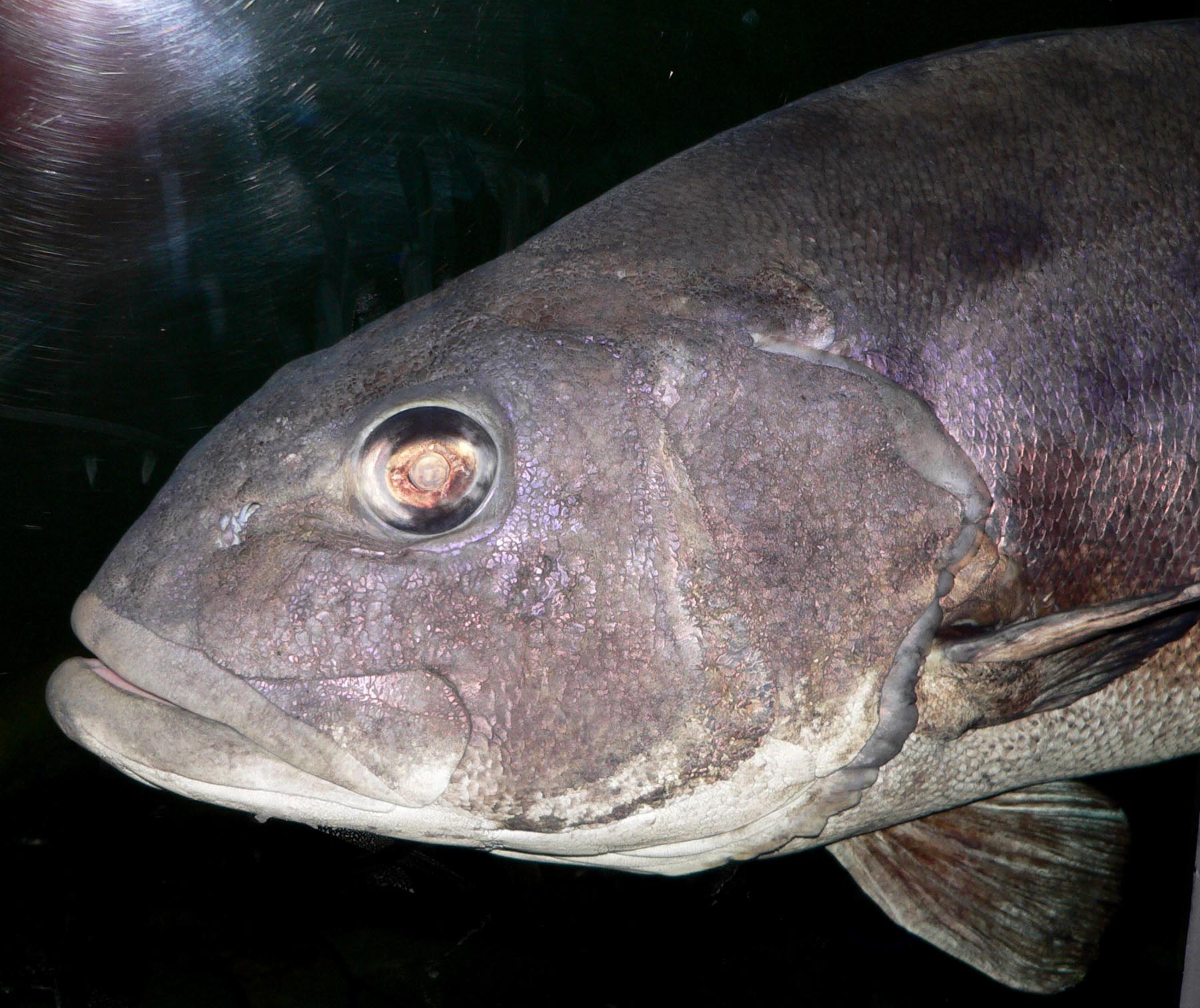- Giant sea bass
status = CR | status_system = IUCN3.1
regnum =Animal ia
phylum = Chordata
classis =Actinopterygii
ordo =Perciformes
familia =Polyprionidae
genus = "Stereolepis "
species = "S. gigas"
binomial = "Stereolepis gigas"
binomial_authority = Ayres, 1859The giant sea bass ("Stereolepis gigas"), also known as the black sea bass, is a fish native to the northernPacific Ocean . [ITIS|ID=167918|taxon=Stereolepis gigas|year=2006|date=18 April] With its conspicuous size and a curious nature, it is surprising that relatively little is known about its biology or behavior.There are published reports of giant sea bass reaching a size of 2.5 m (8.2 feet) and a weight of up to 255 kg (562 lbs). However in Charles F. Holder's book "The Channels Islands" published in 1910, the author claims specimens taken from the Gulf of California attained 800 pounds (360 kg). In the eastern Pacific its range is from Humboldt Bay,
California to theGulf of California ,Mexico , most common fromPoint Conception southward. In the western Pacific it is found in the sea aroundJapan . It usually stays in relatively shallow water, nearkelp forest s, drop offs or rocky bottoms.Giant sea bass were once a relatively common inhabitant of Southern California waters, yet in the 1980s it was facing the threat of
local extinction off the California coast. Beginning in the late 1800s, the species supported both a commercial fishery taking hundreds of thousands of kg annually, and a sport fishery that also landed hundreds of fish each year. Spear fishermen also exploited the giant sea bass, first as free divers, and then after the mid 1950s using scuba gear. Often the divers would target the species when they moved into shallow water during the summer months to spawn. By the late 1970s, biologists with the California State Department of Fish and Game, recognized that the local population of giant sea bass was in serious trouble. Actions were taken, resulting in protection from commercial and sport fishing that went into effect in 1982. Yet for almost two decades encounters with giant sea bass were scarce. The giant sea bass reproduces slowly with a population doubling time of more than 14 years and is still listed as critically endangered.External links
* [http://www.dfg.ca.gov/mrd/status/giant_seabass.pdf California Fish and Game Brief on the Giant Sea Bass]
* [http://home.earthlink.net/~kdocean/photographs.html Giant Sea Bass pictures]
* [http://www.rogerbly.com/video/gsb/giant-sea-bass.html Giant Sea Bass video (of 2006 spawning aggregation in San Diego, CA)]
* [http://img391.imageshack.us/img391/2756/006xf1.jpgPicture of a 5 pound Giant Sea Bass caught off of Huntington Beach, CA on July 1 2008 on the Newport Landing's Patriot]References
Wikimedia Foundation. 2010.

